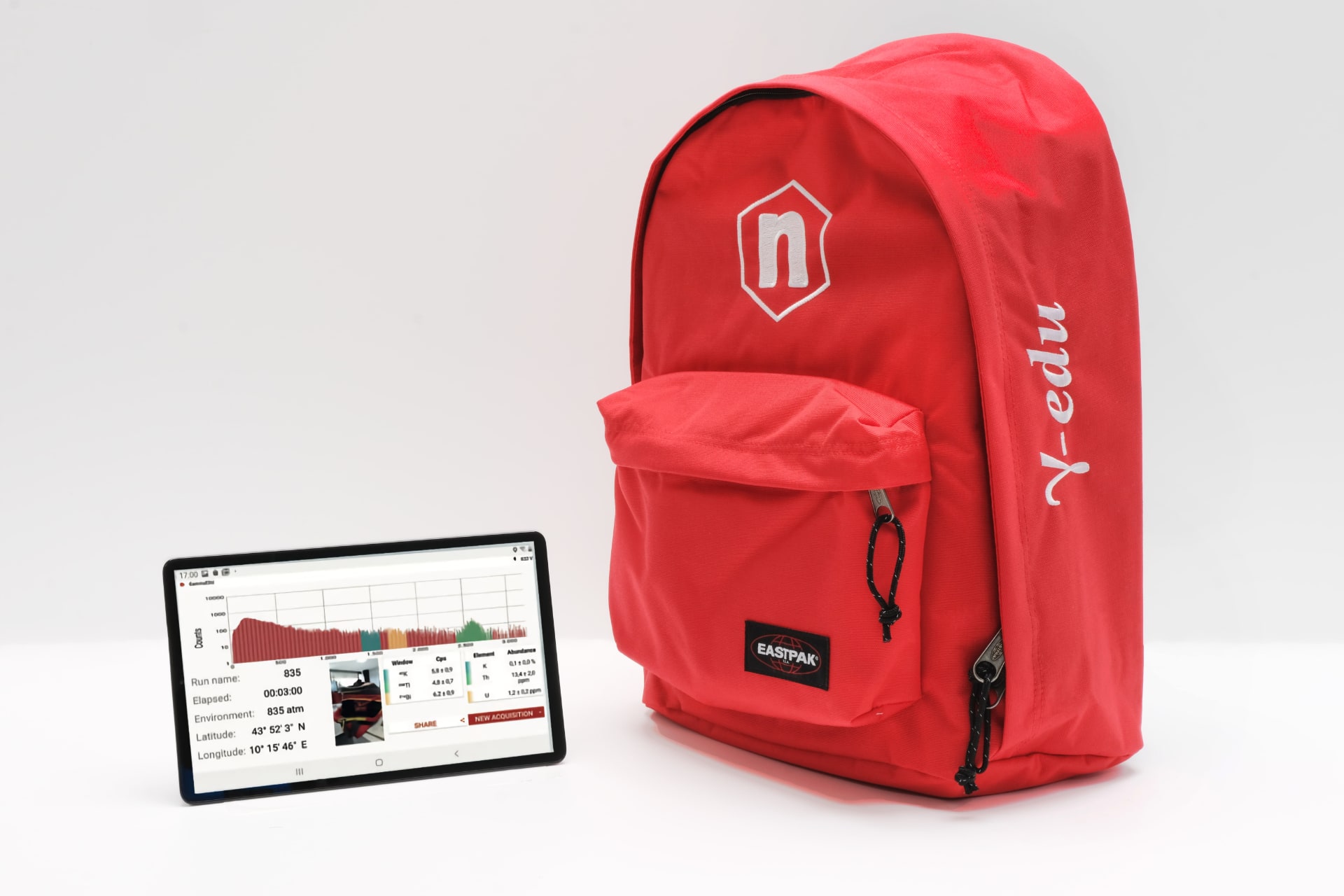| Difficult | Execution Time | Data Analysis | Radioactive Sources |
|---|---|---|---|
| Yes | No |
Hardware setup
This experiment guide is referred to the SP5640 educational kit.
Equipment: SP5640 – Backpack Detector
| Model | SP5640 |
|---|---|
| Description | Backpack Detector |
Purpose of the experiment
The main goal of the experiment is the estimation of the natural radioactivity content in several dwellings and/or buildings representative of the different geological construction materials and commonly used in building constructions.
Fundamentals
The main contributors on the overall natural indoor effective dose to which population is exposed are 222Rn and 220Rn isotopes of radon gas, by-products of the 238U and 232Th series.

Experimental setup block diagram
Only a fraction of radon atoms preserves enough kinetic energy to leave the grain of the material where it has been generated and to reach the empty space in the porous materials (emanation process that depends on the material itself). Moreover, only a fraction of the radon atoms reaching the pore volume of the material mass can escape into the air and reaches the spaces where people live (exhalation process). The exhalation rate and the emanation coefficient.
The study of the natural radionuclides 232Th, 40K, 226Ra, and the radon emanation coefficient exhalation rate is essential to estimate the actual risk for human health associated to a given natural material used for building construction. The natural radioactivity content of building materials depends on the local geology of each region on Earth. One of the requirements of estimate the radiation hazards in closed spaces, aiming to better protect against natural ionizing radiations exposure, is the assessment of the radiation hazards arising from the use of natural building materials in the construction of dwellings, since the majority of people in the World spend most time in indoor environments.
Requirements
No other tool is needed.
Carrying out the experiment
- Power on the γ-stream inside the red backpack.
- Power on the tablet and associate the two devices via Bluetooth.
- Take care that the γ-stream internal battery is charged, otherwise use the external power system.
- Start the measurement campaign and place the backpack on the floor far from the room walls.
- Set the acquisition time to about 5 minutes and see the results. If the statistic is not enough increasing the acquisition time.
- Repeat the measurements in a different place where the building material is different and compare the results.
Results
The measurement results are compared to the reference values in the terrestrial crust. The discrepancy in the reference levels can be explained by the building material, distance from soil and more. This kind of measurement is important for the evaluation of natural radiation exposure from building materials [2013/59/Euratom Directive and by UNSCEAR (United Nations Scientific Committee on the Effects of Atomic Radiation)].
Isotopic abundances evaluated in buildings located in different places and made with several construction materials:
| 238eU [ppm] | 232 Th [ppm] | 40K [%] | |
|---|---|---|---|
| Reference Values Range | [2 ; 2.5]] | [8 ; 12]] | [2 ; 2.5]] |
| Tuff Dwelling (4° floor) | 10±1 | 31±1 | 6.9±02 |
| Modern Building (1° floor) | 2.8±0.6 | 8.8±1.1 | 1.6±0.1 |
| Country House (0° floor) | 6.8±0.9 | 17.6±1.6 | 3.4±0.2 |


